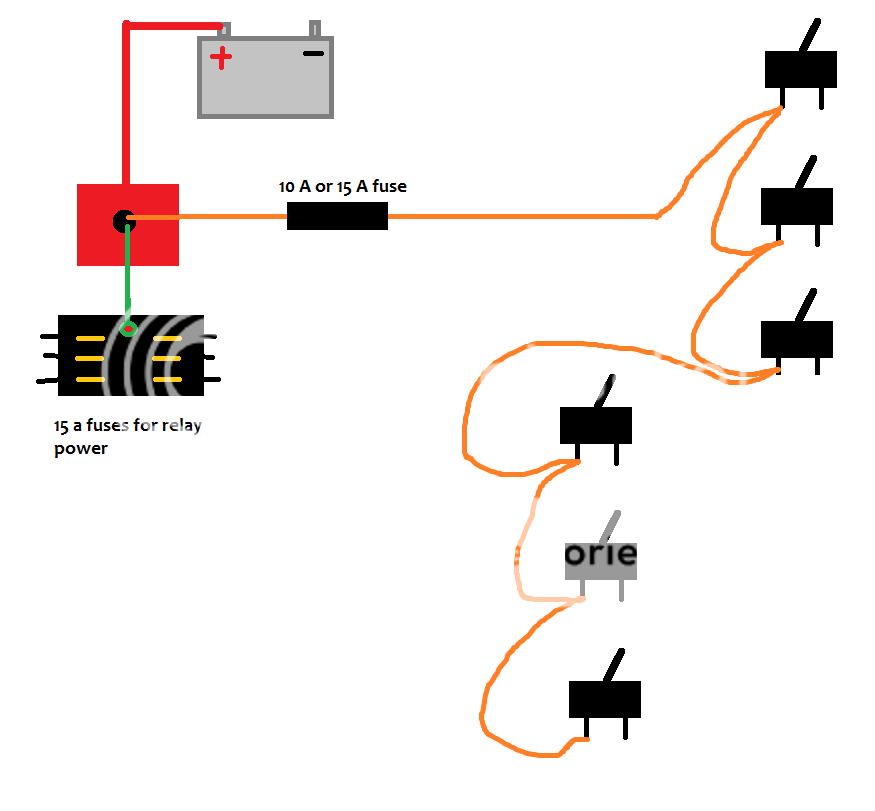GT_80
Full Member
Typically when I run fog lights or driving lights, I fuse the power going into the relay (30 pin on relay) and nothing else. Since I know the switches only see like 2-3 amps I never really bothered fusing them, and I always use heavy duty 120V metal toggle switches, I have never had a switch burn out. What do you guys recommend? I have seen wiring diagrams that have a fuse in the switch power only, or in both the switch power and relay power. I kind of like that approach, but don't want to check 12 fuses if anything stops working. I have a Buss 6 spot fuse holder for the power to the relays and I run a 10 gauge wire to that from the BAT+ junction box between the battery and the main fuse panel.
These are some popular diagrams I found:

Fusing both the Switch power and the relay power

fusing only the 30 pin on the relay (I'm not using an indicator light as in this example and realistically, you would want the indicator to light up off the relay to tell if the system really works)
The other option I have seen is without a relay, putting a fuse inline bwteen battery power and switch input, then outputting power to the lights directly. I have burned many lighted switches using this method because too much current goes through the switch. I always use relays now, even if I wire backup lights to my existing system - the Backup light wire trips the relay in that case.
These are some popular diagrams I found:

Fusing both the Switch power and the relay power
fusing only the 30 pin on the relay (I'm not using an indicator light as in this example and realistically, you would want the indicator to light up off the relay to tell if the system really works)
The other option I have seen is without a relay, putting a fuse inline bwteen battery power and switch input, then outputting power to the lights directly. I have burned many lighted switches using this method because too much current goes through the switch. I always use relays now, even if I wire backup lights to my existing system - the Backup light wire trips the relay in that case.


